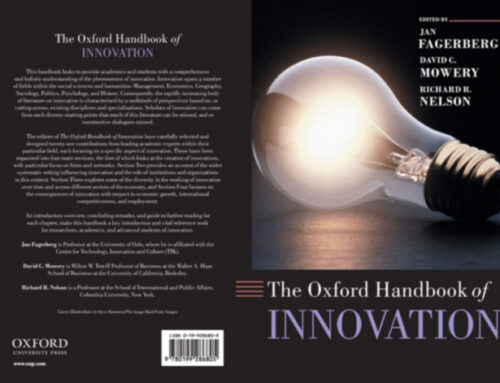If you want to provoke a vigorous debate, start a conversation onorganizational culture. Whilethere is universal agreement that (1) it exists and (2) that it plays a crucial role in shapingbehavior in organizations, there is little consensus on what organizational culture actually is,never mind how it influences behavior and whether it is something leaders can change.This is a problem because, without a reasonable definition (or definitions) of culture, we cannothope to understand its connections to other critical elements of the organization, such as structureandincentive systems. Nor can we develop promising approaches to analyzing, preserving, andtransforming cultures. If we can define what organizational cultureis, it gives us a handle onhow to diagnose problems and even to design and develop better cultures.Beginning May 1, 2013, I facilitated adiscussionaround this question on LinkedIn. The morethan 300 responses included rich and varied perspectives and opinions on organizational culture,its meaning, and importance. I include several distinctive views below, illustrated by directquotes from the LinkedIn discussion thread—and then I offer my own synthesis of these views.(There often were multiple postings with similar themes, so these are early selections;unfortunately, it was not possible to acknowledge everyone who made helpful contributions.)”Culture is how organizations ‘do things.”—Robbie Katanga.Culture is consistent, observable patterns of behavior in organizations.Aristotlesaid, “We arewhat we repeatedly do.” This view elevates repeated behavior or habits as the core of culture anddeemphasizes what people feel, think, or believe. It also focuses our attention on the forces thatshape behaviorin organizations and so highlights an important question: are all those forces(including structure, processes, and incentives) “culture,” or is culture simply the behavioraloutputs?”In large part, culture is a product of compensation.”—Alec Haverstick.Culture is powerfully shaped by incentives. The best predictor of what people will do is whatthey are incentivized to do. By incentives, we mean here the complete set of incentives—monetary rewards, non-monetary rewards such as status, recognition, and advancement, andsanctions—to which members of the organization are subject. But where do incentives comefrom? As with the previous definition, there are potential chicken-and-egg issues. Are patterns ofbehavior the product of incentives, or have incentives been shaped in fundamental ways bybeliefs and values that underpin the culture?
“Organizational culture defines a jointly shared description of an organization fromwithin.”—Bruce Perron.Culture is a process of “sense-making” in organizations.Sense-makinghas been defined as “acollaborative process of creating shared awareness and understanding out of differentindividuals’ perspectives and varied interests.” Note that this moves the definition of culturebeyond patterns of behavior into the realm of jointly-held beliefs and interpretations about “whatis.” It says that a crucial purpose of culture is to help orient its members to “reality” in ways thatprovide a basis for alignment of purpose and shared action.”Organizational culture is the sum of values and rituals which serve as ‘glue’ to integratethe members of the organization.”—Richard Perrin.Culture is a carrier of meaning. Cultures provide not only a shared view of “what is” but also of”why is.” In this view, culture is about “the story” in which people in the organization areembedded and the values and rituals that reinforce that narrative. It also focuses attention on theimportance of symbols and the need to understand them—including the idiosyncratic languagesused in organizations—in order to understand the culture.”Organizational culture is civilization in the workplace.”—Alan Adler.Culture is a social control system. Here the focus is the role of culture in promoting andreinforcing “right” thinking and behaving and sanctioning “wrong” thinking and behaving. Keyin this definition of culture is the idea of behavioral “norms” that must be upheld and associatedsocial sanctions that are imposed on those who do not”stay within the lines.” This view alsofocuses attention on how the evolution of the organization shaped the culture. That is, how havethe existing norms promoted the survival of the organization in the past? Note: implicit in thisevolutionary view is the idea that established cultures can become impediments to survival whenthere are substantial environmental changes.”Culture is the organization’s immune system.”—Michael Watkins.A culture is a form of protection that has evolved from situational pressures. It prevents “wrongthinking” and “wrong people” from entering the organization in the first place. It says thatorganizational culture functions much like the human immune system in preventing viruses andbacteria from taking hold and damaging thebody. The problem, of course, is that organizationalimmune systems also can attack agents ofneededchange, and this has important implications foronboarding and integrating people into organizations.In the discussion, there were also some essential observations pushing against the view of cultureas something that is unitary and static and toward a view that cultures are multiple, overlapping,and dynamic.”Organizational culture [is shaped by] the main culture of the society we live in, albeit withgreater emphasis on particular parts of it.”—Elizabeth SrinagarOrganizational culture is shaped by and overlaps with other cultures—especially the broaderculture of the societies in which it operates. This observation highlights the challenges that global organizations face in establishing and maintaining a unified culture when operating in thecontext of multiple national, regional, and local cultures. How should leaders strike the rightbalance between promoting “one culture” in the organization whilestill allowing for influencesof local cultures?”It oversimplifies the situation in large organizations to assume there is only one culture…and it is risky for new leaders to ignore the sub-cultures.”—Rolf Winkler.The cultures of organizations are never monolithic. There are many factors that drive internalvariations in the culture of business functions (e.g., finance vs. marketing) and units (e.g., a fast-moving consumer products division vs. a pharmaceuticals division of a diversified firm). Acompany’s history of acquisition also figures significantly in defining its culture and sub-cultures. Depending on how acquisition and integration are managed, the legacy cultures ofacquired units can persist for surprisingly long periods of time.”An organization [is] a living culture… that can adapt to the reality as fast as possible.”—Abdi Osman JamaFinally, cultures are dynamic. They shift incrementally and constantly in response to externaland internal changes. So, trying to assess organizational culture is complicated by the reality thatyou are trying to hit a moving target. However, it also opens the possibility that culture changecan be managed as a continuous process rather than through significant shifts (often in responseto crises). Likewise, it highlights the idea that a stable “destination” may never—indeed shouldnever—be reached. The culture of the organization should always be learning and developing.These perspectives provide the kind of holistic, nuanced view of organizational culture that isneeded by leaders in order to understand their organizations truly—and to have any hope ofchanging them for the better.







Leave A Comment